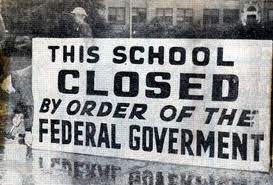Sometime before 1989, I had the opportunity to read Flora Davis’s notable account of the women’s movement in her Moving the Mountain. She traced the origins of the fight for equality among women and then how it splintered (mostly out of necessity) into the flight attendants’ rights, inclusion of men in those ranks, the struggles of the gay (collective) communities, and then into ethnic identities. After a time, each group had to win their individual battles with their own resources and in their own time.
The battles for inclusion and acceptance are yielding ground. It seems the more air time that reaches the public at large regarding the circumstances, the more likely change evolves. It appears the sympathies of even the staunchest of those supporting closed doors are giving way because the myths are being dissolved.
These 12 months have evidenced accounts of many officer involved shootings (OIS) and deaths across the United States. There have been many charges of excessive force and brutality from citizens. There have been demonstrations across the nation in support of the outrage one community has experienced. Cell phone videos have captured incident after incident of senseless shoot first, then ask questions scenarios that are then concluded with no indictment by grand juries.
The names of victims grows on a monthly, if not weekly, basis. Freddie Gray, Walter Scott, Michael Brown, the 12-year old boy who had a plastic water gun (Tamir Rice), the unarmed man who was shot over 46 times are all victims of the mentality that if they are Black and male, they are armed and dangerous – even if they are not armed and are screaming that they can’t breathe. Furthermore, their lives have little value, if any, and they as people have little of any quality to offer society. Furthermore, they have little meaningful education and are incapable of strenuous, critical thinking. Therefore, they are not qualified for high ranking positions and commensurable remuneration.
Mind you, women are among those who have been involved in OIS deaths and injuries. However, the incidents aren’t as publicized and appear to not be as frequent. But there are still incidents such as the woman who was used as a punching bag as the officer straddled her on the freeway and the off duty officer who battered the woman in her car.
I sit here in my SOHO in Southern California wanting to believe that this is one of the equality meccas of the United States. Yet the 1991 memory of my law school dean telling me that the school’s special admissions program (minorities, students with various disabilities, older students, women, gays) was a waste of time because the students weren’t qualified in the first place persists. That attitude seems to be growing. And with it, the size of the disenfranchised population also seems to be growing in correlative size. It brings disappointment that so many believe that Blacks are not entitled to as many rights, access to so many services, and be extended courtesies and respect as any other group of people. There’s an assumption that Blacks are not well educated, sloth when it comes to reading, not capable of difficult thought or reasoning, and only deserving of second- or third-hand services. What they have is not deserving of being handled with care lest it be marred or damaged. They are questioned when it’s discovered they have in their possession items of great value and quality. What contributes to that type of psychology?
However, the Freddie Gray death that brought grand jury indictment of all six officers has offered a swell in the view of spokes people we don’t usually expect to see. Now within visibility are Mayors of cities across the nation who are Black women leading with a firm hand and dignity. The spokes person for the Baltimore Attorney General’s office is also a Black woman. In fact, the commander of the city where Tamir Rice was shot is a Black officer. He vehemently defends his officers and points out that they face great odds with regard to their safety in attempting to defend the populations that depend on them for law and order.
This dichotomy of perspectives is so much like America – inexplicably complex. There is a firm rooting in holding onto the standards of pre-1950 yet media portrayal of many ethnicities in responsible positions is helping to break down the barriers that once prevented representation in meaningful ways in many places.
Cell phone videos are helping to change the times and number of incidents. The move to use police body cameras has also helped in quelling the the cries of brutality because the full scenario of what the officer saw and precipitated their actions is captured.
These dynamics lead me to conclude that positive change is happening at a very slow pace. The spread of diversity and the happenstance of inclusion is not an accident. But it will only continue with the same grease that brought us to this point in history.
References:
- How Not to Help Blacks Find Employment
- 8 reasons why the government hiring process doesn’t work
- What’s with the discrimination against white people?
- Michigan man convicted of murdering Renisha McBride
- Cops shoot and kill man holding toy gun in Wal-Mart
- The Killing of Jordan Russell Davis
- The Skin I’m In
- How to raise a black son in America
Sponsored Links:




